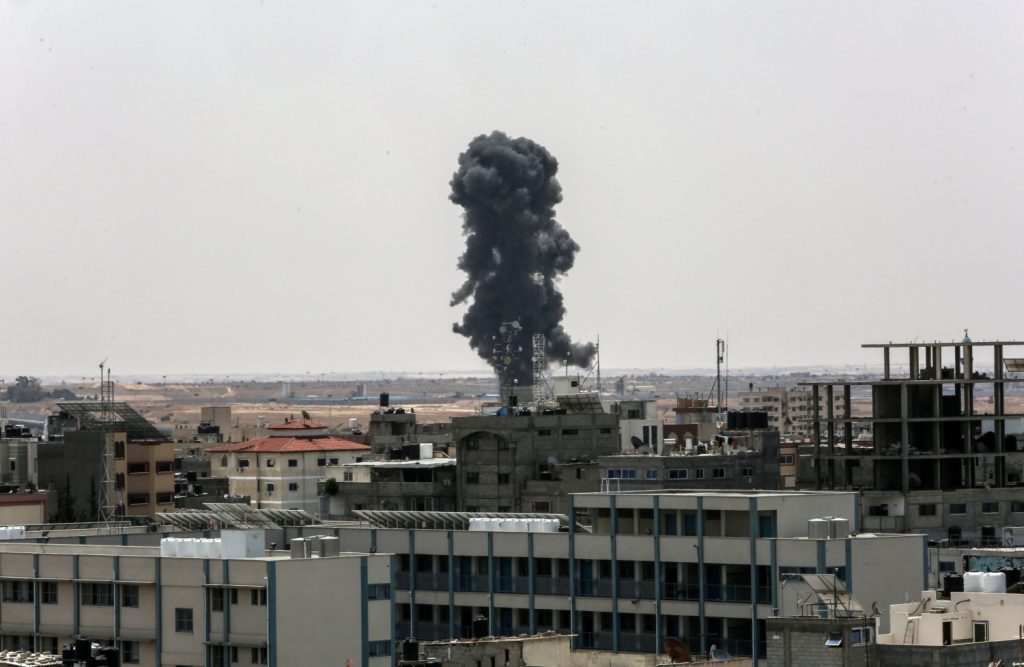Australia/Israel Review
Scribblings: An Iron Dome against Gaza civilian casualties?
May 24, 2023 | Tzvi Fleischer

In “Shield and Arrow”, the IDF’s name for the five days of fighting between Israel and Palestinian Islamic Jihad (PIJ) which followed Israel’s targeted attack on three top PIJ leaders on May 9, 37 Palestinians lost their lives. While deaths in conflict are always regrettable and sad, that raw number conceals the fact that the IDF appears to have done remarkably well in making sure Palestinian civilian casualties were kept to the absolute minimum.
Some pro-Israel analysts have looked in detail at each of those casualties and the story they collectively tell – and that story suggests a major breakthrough in Israel’s ability to operate against terror groups who have embedded themselves among Gaza’s civilians in a dense urban environment while sparing civilians.
Here is the breakdown of those 37 casualties, as detailed by Abu Ali Express, an anonymous but reliable Israeli online military intelligence expert who provides good sources for all his conclusions, such as funeral notices from the militant groups themselves:
- 13 PIJ militants, killed by Israel, including six senior commanders;
- Seven militants from two other terror groups – the Popular Mobilisation Front and the al-Mujahideen Brigades;
- Ten civilians killed in the initial strike on the homes of three PIJ commanders on May 9 – all family members or neighbours of these commanders. One of them was an unarmed Hamas operative. Sadly, three were children;
- Four civilians, including three children, killed by PIJ rockets that misfired and landed inside Gaza;
- One child is claimed to have died of a heart attack caused by the Israeli strikes, although this is unproven;
- One Palestinian worker hit by a PIJ rocket that struck the construction site he was working at inside Israel;
- One man killed by a PIJ rocket that blew up on the launchpad.
What’s amazing about these numbers is that apparently, after the initial strike which targeted the three senior PIJ commanders who were the initial targets of “Shield and Arrow” – and sadly but apparently inevitably also cost the lives of some family members and neighbours – Israel killed a total of zero Palestinian civilians throughout the rest of the operation.
After those initial strikes on the PIJ commanders, the IDF reportedly carried out 419 attacks on terrorist-linked targets in Gaza during the five days of fighting – apparently without killing any civilians.
This is virtually unprecedented in urban warfare. How did the IDF manage it? Well, Israeli media reports make it clear that IDF intelligence in Gaza in this operation was remarkable – considerably better than in past operations in Gaza (see the piece by Ron Ben-Yishai, p. 12). Aided by improvements in military technology, the IDF was apparently able to use its ability to monitor almost all of Gaza in real time to abort any strike likely to end up killing civilians. And indeed, video footage has been released of strikes aborted because children suddenly entered the target area.
While Israel carefully avoided targeting Hamas, which is actually the big threat from Gaza, this conflict almost certainly gave Hamas leaders a lot to think about.
Israel invented Iron Dome to provide amazing protection from Hamas rocket attacks on Israeli towns – and it has been able to reduce but not eliminate the effects of rocket attacks from Gaza on Israeli civilians. Yet Hamas and PIJ have another strategic reason for launching such attacks. In addition to wanting to kill Israelis and disrupt normal life in Israel, Hamas also believes it benefits when it forces Israel to kill Palestinian civilians in counterstrikes. By forcing Israel to fight back in a way that inevitably kills Gaza civilians, Hamas believes it damages Israel and furthers its quest for the Jewish state’s destruction by getting Israel globally condemned and vilified for causing those civilian casualties – especially in the Muslim world.
If Israel can continue improving its ability to use comprehensive intelligence and high-tech weaponry to keep civilian casualties in Gaza to an absolute minimum in future conflicts, it may have now found a way to supplement Iron Dome and defang Hamas’ other key strategy for using rocket attacks to harm the Jewish state.
Abbas’ Nakba Denial
As noted elsewhere in this edition, the Palestinian Authority, led by Mahmoud Abbas, is pushing hard to spread its narrative that Israel’s creation in 1948 was their “Nakba” (“catastrophe”), which should be commemorated, mourned and condemned. As part of this process, in early May, Abbas issued a decree making it a crime to deny the Nakba. This decree seems to be part of ugly and absurd efforts to create parallels between the Nakba and the Holocaust – intentionally mirroring efforts to counter the racist phenomenon of Holocaust denial, including laws against it in some countries.
The decree said, “the Nakba of Palestine is an integral part of the Palestinian national narrative based on historical right and international resolutions, and the denial of the Nakba is a crime punishable by law with imprisonment not exceeding two years.” It then goes on to say that Nakba denial includes “Denying the classification of the Nakba crime as a crime against humanity”; “Absolving Zionist groups of their responsibility for the crimes” and “Claiming that the Palestinian people left voluntarily and without coercion.”
Yet as the American blogger Elder of Ziyon has pointed out, under this wording, Abbas himself appears guilty of “Nakba denial”. In a 2009 interview, he described his own family’s flight from Safed during the 1948 war – and basically admitted they fled “voluntarily and without coercion.”
He said, “People were motivated to run away… They feared retribution from Zionist terrorist organisations… Those of us from Safed especially feared that the Jews harboured old desires to avenge what happened during the 1929 uprising… They realised the balance of forces was shifting and therefore the whole town was abandoned on the basis of this rationale.”






